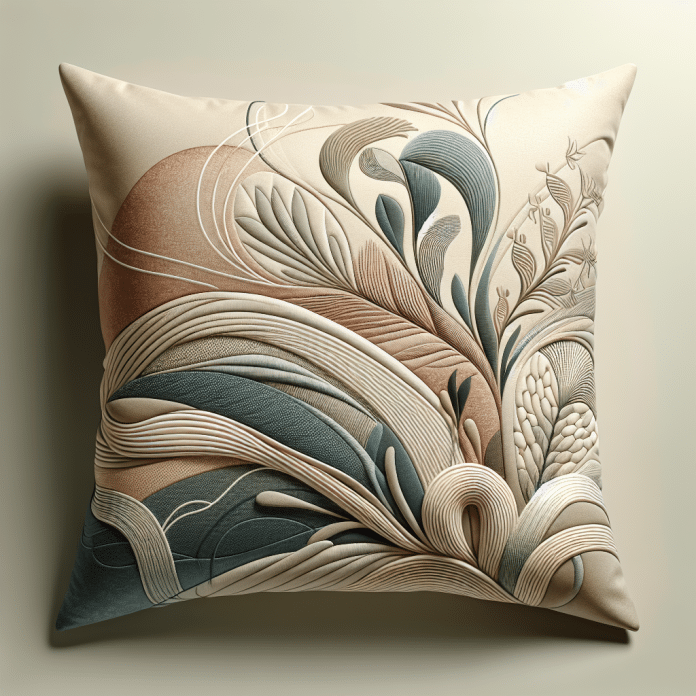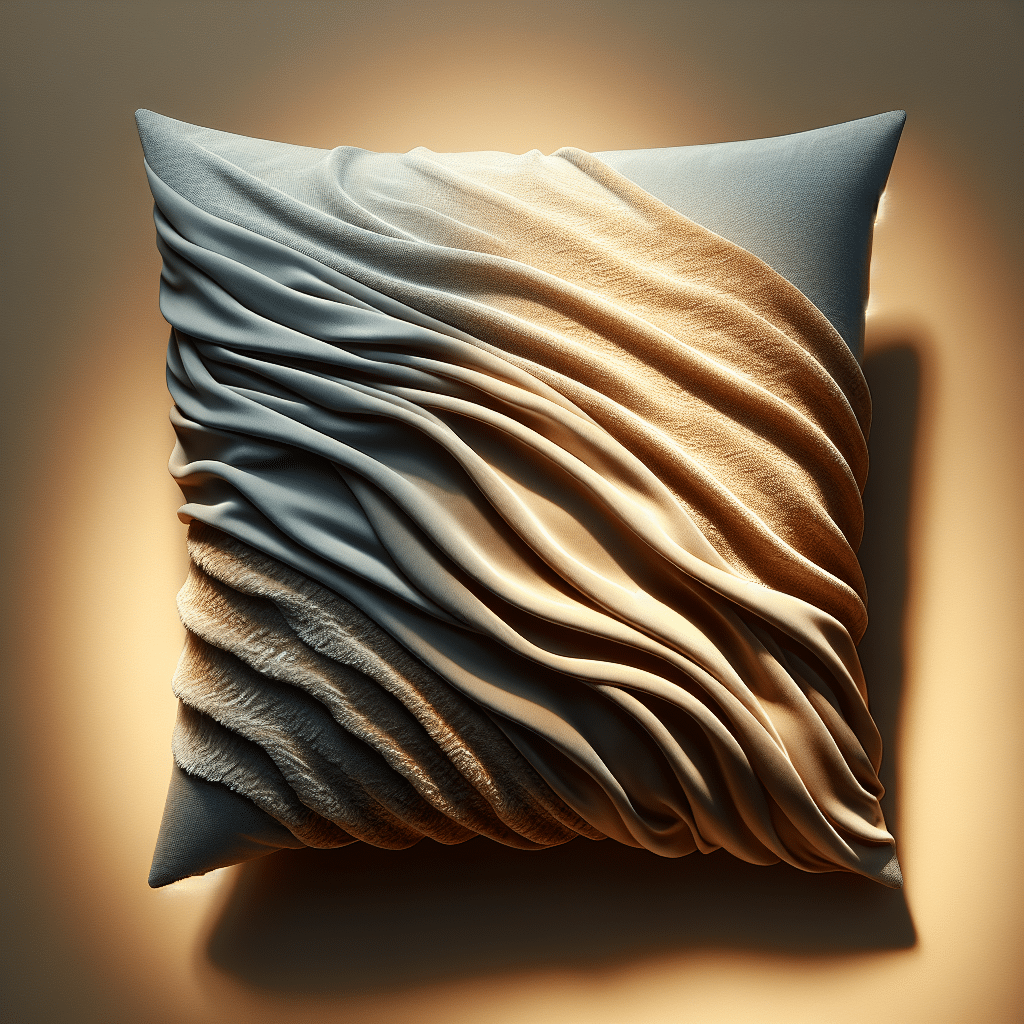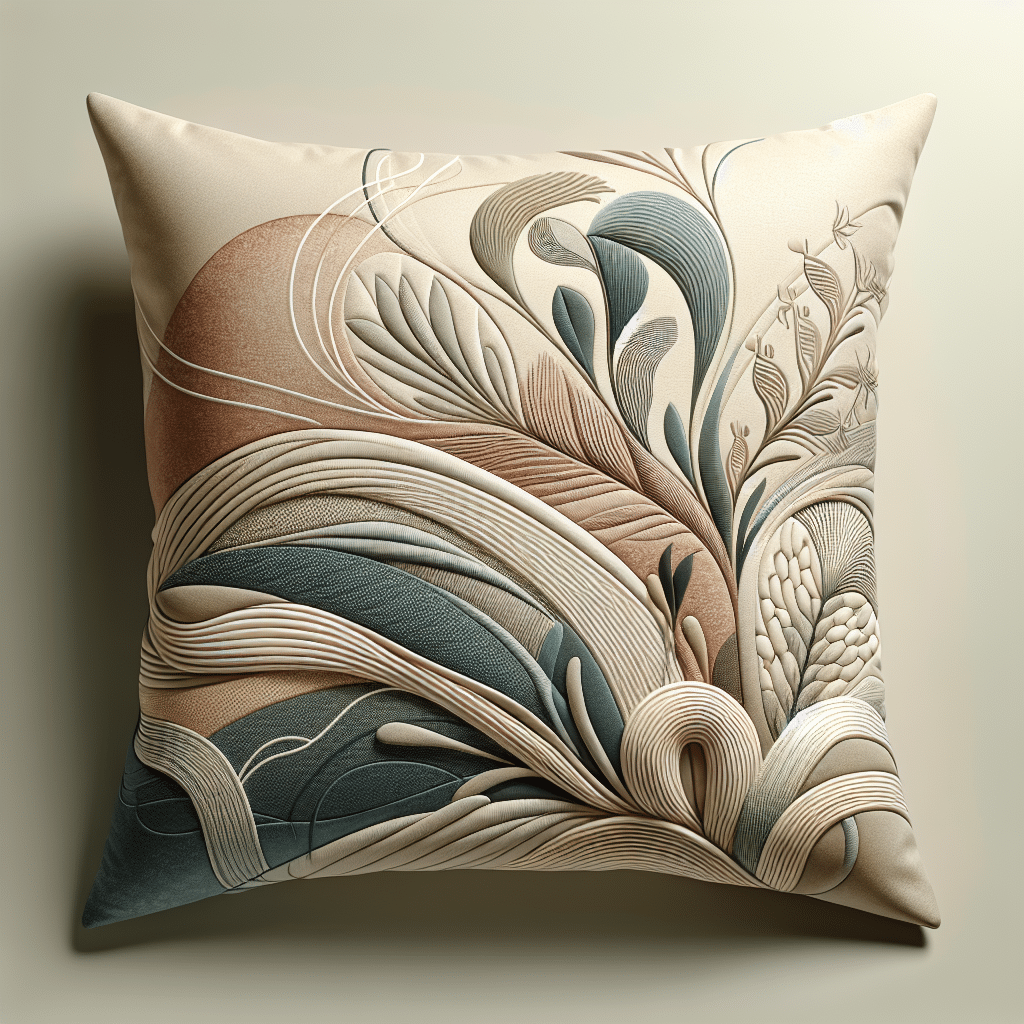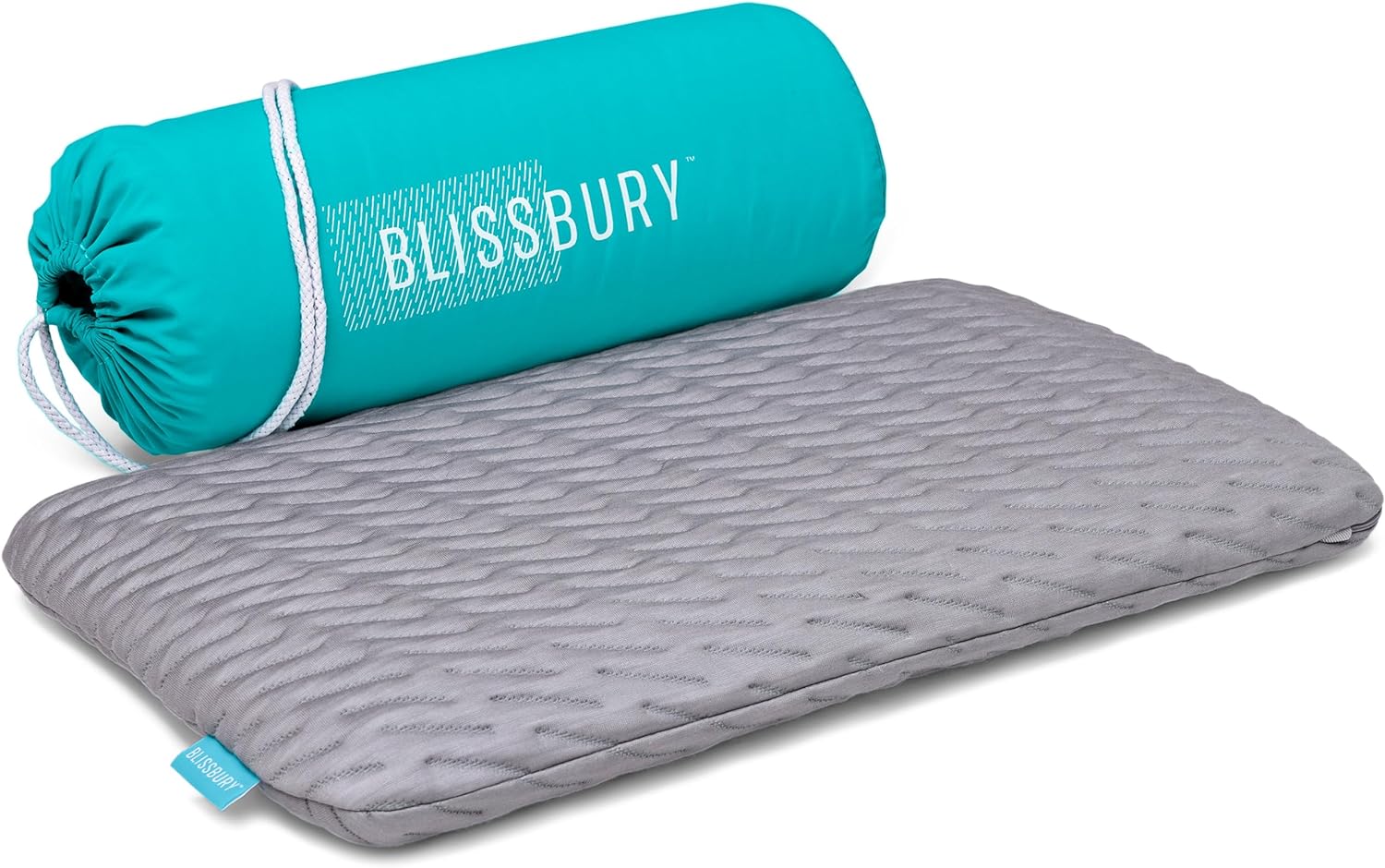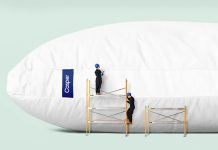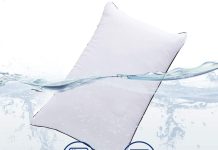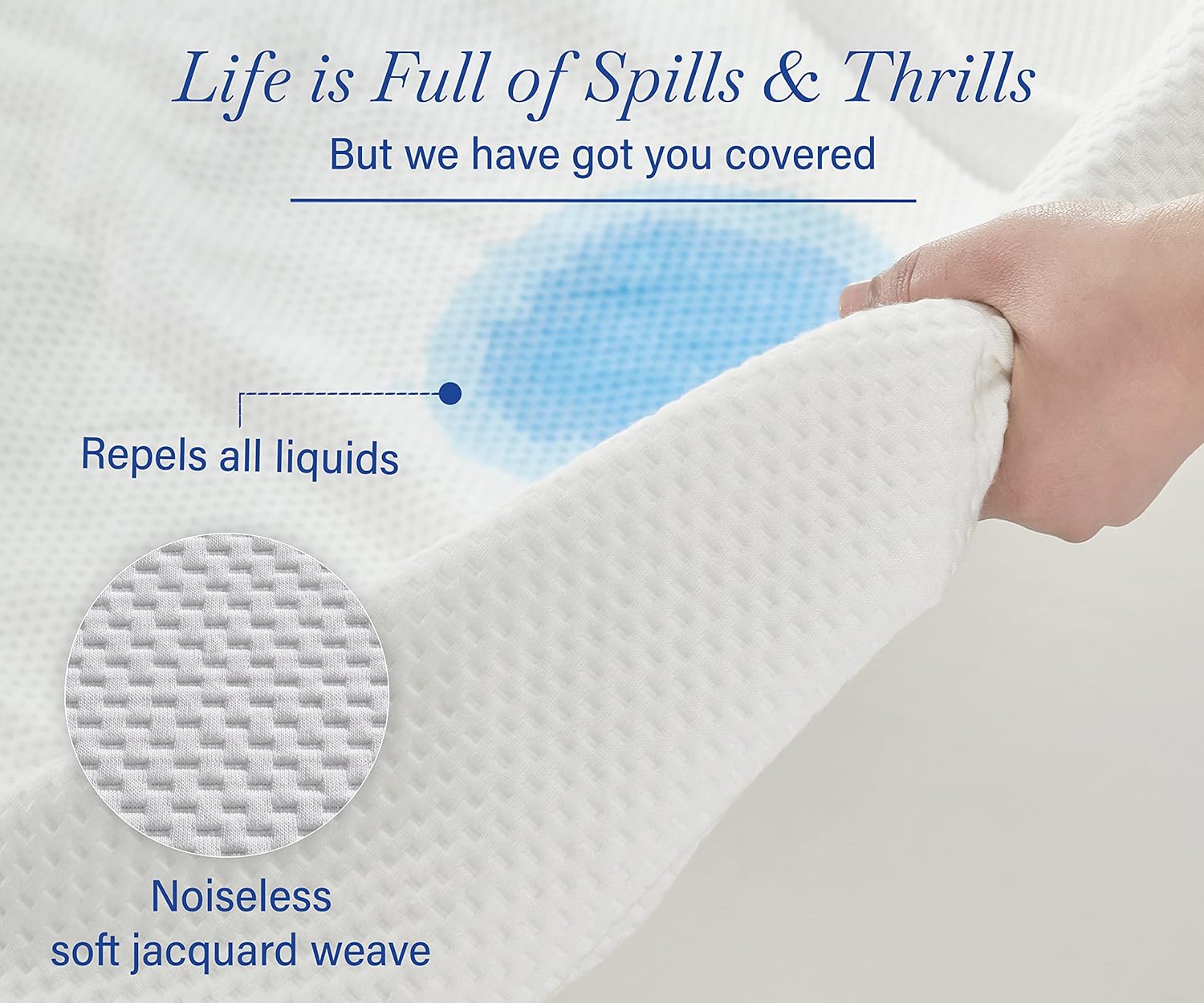Are you on a quest to find the perfect fabric for your pillow covers and cases? Look no further! In this article, we will guide you through the process of selecting the best fabric to ensure your pillows not only look stylish but are also comfortable and long-lasting. From luxurious silk to durable cotton, we will explore the various options available, taking into consideration factors such as breathability, durability, and ease of maintenance. So, let’s embark on this fabric exploration together and discover the perfect choice for your pillows!
Review contents
Natural Fabrics
Cotton
Cotton is one of the most popular and widely used natural fabrics for pillow covers and cases. It is known for its softness, breathability, and durability. Cotton allows air to circulate, keeping you cool and comfortable during sleep. It is also hypoallergenic, making it a great option for those with allergies or sensitivities. In addition, cotton is easy to maintain and can be machine-washed without losing its quality. With a wide range of colors and patterns available, cotton pillow covers can easily match any home décor style.
Linen
Linen is another natural fabric that is commonly used for pillow covers and cases. It is made from the fibers of the flax plant and is known for its strength and durability. Linen pillow covers have a unique texture and feel, giving them a luxurious and sophisticated look. They are highly breathable and absorbent, making them ideal for hot and humid climates. Linen is also hypoallergenic, resistant to dust mites, and easy to maintain. However, it is important to note that linen pillow covers may wrinkle easily and may require ironing to maintain their smooth appearance.
Silk
Silk is a luxurious and elegant natural fabric that is often associated with luxury bedding. It is made from the cocoons of silkworms and is known for its softness and smoothness. Silk pillow covers have a lustrous sheen and a silky feel, adding a touch of sophistication to your bedroom. Silk is naturally hypoallergenic, making it a great option for those with allergies or sensitive skin. It is also highly breathable and temperature-regulating, keeping you cool in the summer and warm in the winter. However, silk pillow covers may require special care as they are delicate and may be more prone to wrinkling and damage.
Synthetic Fabrics
Polyester
Polyester is a synthetic fabric that is commonly used for pillow covers and cases. It is known for its durability, wrinkle resistance, and easy maintenance. Polyester pillow covers are machine washable and can withstand frequent washing without losing their shape or color. They are also resistant to stains, making them a practical choice for households with children or pets. However, polyester may not be as breathable as natural fabrics and may trap heat, making it less suitable for hot climates.
Nylon
Nylon is another synthetic fabric that is often used for pillow covers and cases. It is known for its strength, durability, and resistance to abrasion. Nylon pillow covers are highly resistant to wear and tear, making them a long-lasting option. They are also machine washable and easy to maintain. Nylon is a breathable fabric that allows air to circulate, keeping you cool and comfortable during sleep. However, nylon pillow covers may not be as soft or luxurious as natural fabrics like cotton or silk.
Microfiber
Microfiber is a synthetic fabric that is commonly used for pillow covers and cases. It is made from ultra-fine fibers, which give it a soft and smooth texture. Microfiber pillow covers are highly durable, wrinkle-resistant, and easy to maintain. They are machine washable and dry quickly, making them a convenient choice for busy households. Microfiber is also hypoallergenic and dust mite resistant, making it a good option for those with allergies or sensitivities. However, microfiber may not be as breathable as natural fabrics, and it may trap heat, making it less suitable for hot climates.
Blended Fabrics
Cotton-Polyester Blend
A cotton-polyester blend is a fabric that combines the best qualities of both natural and synthetic fibers. It offers the softness and breathability of cotton, along with the durability and wrinkle resistance of polyester. Cotton-polyester blend pillow covers are easy to maintain, machine washable, and resistant to stains. They offer a good balance between comfort and durability, making them a popular choice for pillow covers and cases.
Cotton-Linen Blend
A cotton-linen blend is a fabric that combines the natural fibers of both cotton and linen. This blend offers the softness and breathability of cotton, along with the strength and durability of linen. Cotton-linen blend pillow covers have a unique texture and feel, giving them a rustic and relaxed look. They are highly breathable, absorbent, and hypoallergenic. However, it is important to note that cotton-linen blend pillow covers may require more care and maintenance compared to other fabrics.
Considerations for Different Uses
Indoor Pillow Covers
For indoor pillow covers, comfort and aesthetic appeal are often the primary considerations. Fabrics like cotton, linen, and silk are excellent choices for indoor pillow covers as they offer softness, breathability, and a wide range of color and pattern options. These fabrics can enhance the overall comfort and ambiance of your living spaces.
Outdoor Pillow Covers
When it comes to outdoor pillow covers, durability and weather resistance are key factors to consider. Synthetic fabrics like polyester, nylon, and microfiber are great choices for outdoor use as they are resistant to fading, staining, and mildew. These fabrics can withstand exposure to sunlight, moisture, and other outdoor elements, ensuring that your pillow covers remain in good condition for a long time.
Decorative Pillows
For decorative pillows, it’s all about adding visual interest and enhancing the overall aesthetic of your space. Fabrics with vibrant colors, intricate patterns, and unique textures can create eye-catching decorative pillows. Natural fabrics like silk and cotton-linen blends are often preferred for decorative purposes as they offer a luxurious and sophisticated look.
Pillow Cases
Pillow cases are in direct contact with your skin, so comfort and breathability are important considerations. Natural fabrics like cotton, linen, and silk are popular choices for pillow cases as they are soft, breathable, and hypoallergenic. These fabrics promote air circulation and help regulate body temperature, ensuring a comfortable and restful sleep.
Durability
Thread Count
Thread count refers to the number of threads woven into one square inch of fabric. A higher thread count generally indicates a higher quality fabric that is more durable and softer to the touch. Pillow covers with a thread count between 200 and 400 are considered to be of good quality and provide a balance between durability and comfort.
Weave Type
The weave type of a fabric also plays a role in its durability. Fabrics with tighter weaves, such as plain weave or twill weave, tend to be more durable and resistant to wear and tear. On the other hand, looser weaves like satin or sateen may be more prone to snagging or fraying.
Abrasion Resistance
Abrasion resistance refers to a fabric’s ability to withstand friction and rubbing without showing signs of wear. Fabrics with a higher abrasion resistance are more suitable for pillow covers that will be subjected to frequent use or handling. Synthetic fabrics like polyester and nylon generally have good abrasion resistance, making them durable options for pillow covers.
Breathability and Comfort
Air Flow
Breathability is an important factor to consider for pillow covers, especially for those who tend to sleep hot or live in warm climates. Fabrics that allow air to circulate freely, such as cotton and linen, promote better air flow and help regulate body temperature during sleep. These fabrics can prevent overheating and provide a cooler and more comfortable sleep experience.
Temperature Regulation
Certain fabrics, like silk, have natural temperature-regulating properties. Silk pillow covers can help keep you cool in the summer and warm in the winter, as they can effectively wick away moisture and regulate body heat. This makes silk a great choice for those who experience fluctuations in body temperature or sleep in environments with varying temperatures.
Moisture Wicking
Fabrics that have moisture-wicking properties can help keep you dry and comfortable throughout the night. Moisture-wicking fabrics, like cotton and microfiber, are capable of absorbing and releasing moisture, preventing the buildup of sweat and maintaining a drier sleep surface. These fabrics are particularly beneficial for those who perspire heavily during sleep.
Ease of Maintenance
Machine Washable
For convenience and ease of maintenance, machine-washable pillow covers are a great option. Fabrics like cotton, polyester, and microfiber are typically machine washable and can withstand frequent washing without losing their shape or color. Machine-washable pillow covers save you time and effort, allowing for effortless cleaning.
Stain Resistance
Stain resistance is an important consideration, especially for pillow covers that are exposed to spills, smudges, or other potential stains. Synthetic fabrics like polyester and microfiber often have inherent stain-resistant properties, making them easier to clean and maintain. These fabrics are less likely to absorb liquids or retain stains, ensuring that your pillow covers remain in pristine condition.
Wrinkle Resistance
Wrinkle resistance is another factor to consider, especially if you prefer a crisp and neat appearance for your pillow covers. Synthetic fabrics like polyester and microfiber are known for their wrinkle resistance, requiring little to no ironing or steaming to maintain a smooth and wrinkle-free look. This can save you time and effort in the long run, especially if you have multiple pillow covers to care for.
Allergies and Sensitivities
Hypoallergenic Fabrics
For individuals with allergies or sensitivities, hypoallergenic fabrics should be a top consideration. Natural fabrics like cotton, linen, and silk are known for their hypoallergenic properties, as they are less likely to cause allergic reactions or skin irritations. These fabrics are free from synthetic chemicals and irritants, making them safe for those with sensitive skin or respiratory conditions.
Dust Mite Resistance
Dust mites are common allergens that can trigger allergies or exacerbate respiratory conditions. Fabrics with tight weaves, such as cotton and microfiber, are less likely to harbor dust mites and their allergens. These fabrics can be a good choice for pillow covers if you are prone to dust mite allergies or respiratory sensitivities.
Chemical-Free Fabrics
For those who prioritize eco-friendliness and sustainability, choosing chemical-free fabrics is important. Organic cotton, linen, and silk are grown without the use of chemical fertilizers, pesticides, or genetically modified organisms. These fabrics are produced using environmentally friendly practices, making them a safe and sustainable option for pillow covers.
Aesthetic Appeal
Color and Pattern Options
The color and pattern of your pillow covers can have a significant impact on the overall aesthetic of your living spaces. Fabrics like cotton, linen, and silk offer a wide range of color options, allowing you to choose the perfect shade to complement your existing décor. In addition, these fabrics can be easily dyed or printed with various patterns, giving you endless possibilities for creating a visually appealing and cohesive look.
Texture and Feel
The texture and feel of your pillow covers can add depth and dimension to your spaces. Fabrics like linen and silk have unique textures that can create visual interest and enhance the tactile experience of your pillows. Linen offers a rustic and relaxed texture, while silk provides a lustrous and luxurious feel. Choosing fabrics with different textures can help create a visually dynamic and inviting atmosphere.
Budget Considerations
Cost
Budget is often an important consideration when choosing pillow covers. Natural fabrics like cotton and linen are generally more affordable compared to silk. Synthetic fabrics like polyester and microfiber are also budget-friendly options. The cost of pillow covers will depend on the fabric type, quality, and any additional features or embellishments.
Longevity
Investing in pillow covers that are durable and long-lasting can save you money in the long run. Fabrics like cotton, polyester, and microfiber are known for their durability and can withstand frequent use and washing. Natural fabrics like silk and linen may require more care and maintenance, but their luxurious feel and aesthetic appeal can justify the investment.
In conclusion, choosing the best fabric for pillow covers and cases involves considering factors such as comfort, durability, breathability, ease of maintenance, allergies and sensitivities, aesthetic appeal, and budget. Natural fabrics like cotton, linen, and silk offer softness, breathability, and a wide range of options for different needs and preferences. Synthetic fabrics like polyester, nylon, and microfiber provide durability, wrinkle resistance, and easy maintenance. Blended fabrics offer the benefits of both natural and synthetic fibers. Considering the specific use of the pillow covers, such as for indoor or outdoor use, decorative purposes, or pillow cases, is also important. Other factors like thread count, weave type, abrasion resistance, air flow, temperature regulation, moisture wicking, machine washability, stain resistance, wrinkle resistance, hypoallergenic properties, dust mite resistance, and the use of chemical-free fabrics should also be taken into account. Lastly, the aesthetic appeal, color and pattern options, texture and feel, cost, and longevity should be considered based on personal preferences and budget. By carefully considering these factors, you can choose the best fabric for your pillow covers and cases that will provide comfort, durability, and style for years to come.

